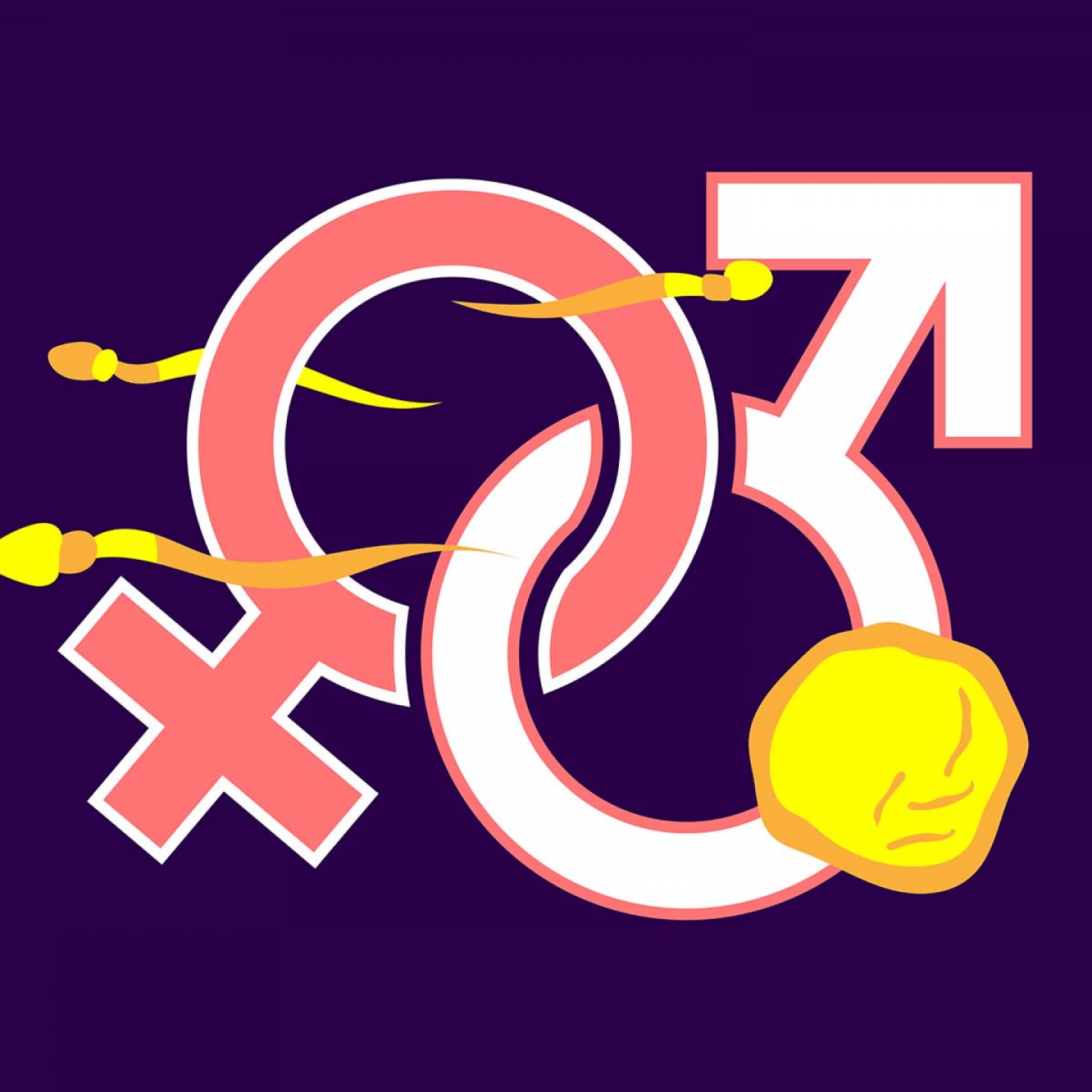In Emily Martin’s “The Egg and the Sperm: How Science Has Constructed a Romance Based on Stereotypical Male-Female Roles,” she describes the various ways that scientists have personified and ascribed gender roles to the biological process of fertilization. I was interested in her statement, “More crucial, then, than what kinds of personalities we bestow on cells is the very fact that we are doing it at all” (Martin 501). In her article, Martin cites the research conducted at Johns Hopkins in her husband’s lab, which revealed that sperm were quite weak and by extension, unable to “penetrate” the egg (Martin 493). Nonetheless, their published research continued to describe sperm as attacking and penetrating (Martin 493). When they finally recognized the need for an updated narrative, they were still unable to eliminate gender stereotypes (Martin 493-494). My paper imagines an email thread between Emily Martin and the Johns Hopkins’ researchers following the publication of her article.
From: David Katz
To: Emily Martin
Cc: Jay Baltz, Richard Cone
Subject: A humble congratulations on “The Egg and the Sperm”
Dear Emily,
I don’t know how you managed to turn the study of fertilization into a feminist language war, but I applaud you. Congratulations, with my utmost respect and gratitude on behalf of the science world. When I entered this field it was to learn, and I think we sometimes forget that is what we’re trying to do here. Reading your article brings me dismay, but much greater optimism. We are all so very lucky to have you; I both fear and look forward to what else you have to teach us. I have copied my colleagues, mostly in case Jay needed a reminder to reach out himself. Richard - buy her a beer on me.
Kindest regards,
David
From: Jay Baltz
To: Emily Martin, David Katz
Cc: Richard Cone
Subject: re: A humble congratulations on “The Egg and the Sperm”
Hi Emily,
Congratulations on the article. I can already tell it will be groundbreaking. Thanks for the cc, David. Looking forward to seeing you all in person sometime soon.
Jay
From: Emily Martin
To: David Katz, Jay Baltz
Cc: Richard Cone
Subject: re: A humble congratulations on “The Egg and the Sperm”
Dear David and Jay,
Thank you both for your kind words; I can’t tell you how much it means coming from you. David: it’s wonderful to hear that my writing has reignited your will to learn. I hope you are both aware that this has always been a learning process for me, and that our relationship is entirely reciprocal in this aspect. I am indebted to your team for the insight your research has provided me, and I believe the progression of my work is intrinsically tied to the progression of yours. If nothing else, that is the eternal beauty of science.
Along this same vein, I am curious why you chose the word “optimism,” David. I do not believe that I share this sentiment. When you consider the field’s persisting determination to not only personify biological processes, but consistently fall back on stereotypes in doing so, it reveals a menacing image of how deeply misogyny is engrained in Western culture, and Western culture is engrained in science. It truly feels like this is a single grain of sand in a sea of dissection and reinvention that must occur in order for this to be undone, and to think more broadly, in order to decentralize the West in fields that should serve a universal purpose. I am inspired, and incredibly driven, but I am not optimistic.
Sincerely,
Emily
From: Jay Baltz
To: Emily Martin, David Katz
Cc: Richard Cone
Subject: re: A humble congratulations on “The Egg and the Sperm”
Hi Emily,
I understand what you’re saying but I also think our work has shown an ability and willingness to progress that certainly makes me hopeful. When we discovered the weakness of the mechanical force of the sperm’s tail, we upended the science. We were the first to articulate the active role of the egg, because we continued to strive for the most precise scientific description of the processes we observed. I’m proud of our publications and believe we wrote them as accurately as possible. As long as science keeps going in this direction, I don’t see how we will move anywhere but forward.
Jay
From: Emily Martin
To: Jay Baltz, David Katz
Cc: Richard Cone
Subject: re: A humble congratulations on “The Egg and the Sperm”
Dear Jay,
I understand how you feel and I would like to reiterate my previous comments where I explicitly acknowledged the progression of your work. I’d also like to point you to the footnotes in my article; I was on the sidelines the whole time and often heard about the lab’s progress over dinner. I believe we all suffered from something akin to the Semmelweiss reflex - all of the scientific evidence pointed to a different sperm and egg tale, but old beliefs proved difficult to shed. You have to smile, though, considering that your modified language fell into yet another trap (pun intended). After reconfiguring the implied power dynamics between the egg and the sperm, your egg sounds like Black Widow (I know you’ve always been a fan of the comics ;)). Have you thought about why scientific publications are ridden with gendered language? Why yours have been? Your research is impeccable, Jay, but you must deliberately develop a vocabulary that describes your discoveries precisely, and yet is unencumbered by your cultural positioning.
With warm affection and great respect,
Emily
From: David Katz
To: Emily Martin, Jay Baltz
Cc: Richard Cone
Subject: re: A humble congratulations on “The Egg and the Sperm”
Dear all,
So great to see such spirited debate - seems like old times! Jay - we are in such privileged positions, don’t you see the responsibility we hold? We have the opportunity to subvert gender roles at the origin of LIFE ITSELF. Can’t you see how unique and powerful that is?? We’ve inadvertently given credence to cultural archetypes that we don’t believe in, but our work has forced us to confront the fact that we do unconsciously buy into these stereotypes. And that is what is so concerning about both the culture we live in and the science that reproduces it (also pun intended).
I would like to believe that the principles of science are contradictory to the very notion of culturally manufactured gender roles. It is hard for me to accept the fact that science may be a product of that same system, but I know that at the very least, science and culture are and have perhaps always been entwined. Emily - I want to firmly restate my optimism that scientists can wield the power of language to create a new era where cells are simply cells - after all, what’s more universal than biology?
Cheers,
David
From: Richard Cone
To: Emily Martin, David Katz
Cc: Jay Baltz
Subject: re: A humble congratulations on “The Egg and the Sperm”
To quote my brilliant wife, “More crucial than what kinds of personalities we bestow on cells is the very fact that we are doing it at all.”
Let’s continue the debate at our place. 8 p.m. I got the beer.
Richard

Olivia McAlpine
Olivia McAlpine has just completed first year in OCADU’s Creative Writing Program. After graduating from Canada’s National Ballet School in 2018, she began her career as a professional ballet dancer in Florida where she was employed by The Sarasota Ballet. When the pandemic started, the ballet company temporarily shut down and Olivia moved back to Toronto, Ontario. She enrolled in OCADU with the intention of completing one term before returning to work, but Olivia was thrilled to discover how her studies challenged her and widened her world. She is constantly inspired by her peers and professors and feels incredibly grateful to be a part of the OCADU community. Next year, she will be continuing her studies remotely while working for The Sarasota Ballet.
Works Cited & Consulted
- Martin, Emily. “The Egg and the Sperm: How Science Has Constructed a Romance Based on Stereotypical Male-Female Roles.” Signs, vol. 16, no. 3, 1991, pp. 485–501. JSTOR, www.jstor.org/stable/3174586. Accessed 9 Apr. 2021.
Header Artwork by Michael Rinderle. Untitled, 2021.
